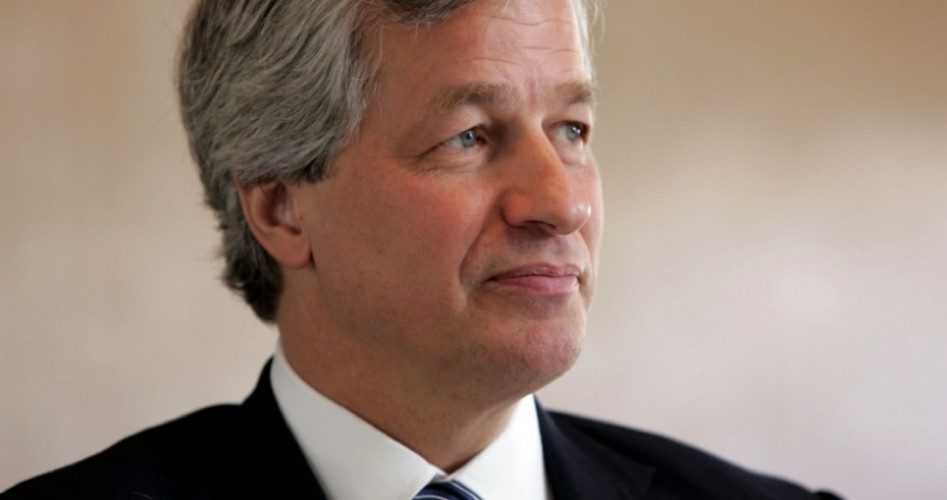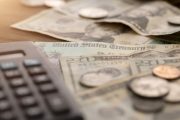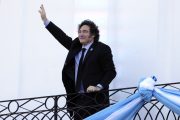
Oops! Another couple billion dollars lost. Oh well, no biggie; nothing to get too concerned about. That, in essence, was the reaction of Jamie Dimon, CEO of JPMorgan Chase, America’s biggest bank, to the news that Morgan had lost $2 billion in derivatives trading.
“This is a very unfortunate and inopportune time to have had this kind of mistake,” Dimon said in an interview on NBC’s Meet the Press with David Gregory on May 13.
But, not to worry, because JPMorgan Chase has plenty more cash where that came from. “This is not a risk that is life threatening to JPMorgan,” Dimon said. “This is a stupid thing that … we should never have done. But we are still going to earn a lot of money this quarter. So it isn’t like the company is jeopardized.”
Yes, if you’re Jamie Dimon or one of the other Wall Street insider banks — especially those with special status as “primary dealers” — that have a direct pipeline to the Fed’s “thin air” machine, a mere $2 billion is barely a trifle.
Thanks to the decades-long efforts of the Federal Reserve’s tireless nemesis, Rep. Ron Paul, last year the Fed was finally audited by the Government Accountability Office (GAO), which partially lifted the veil on some of the egregious conflicts of interest and colossal theft that have become commonplace in that institution. The GAO audit only partially lifted the veil because the Fed’s lobbyists succeeded in limiting the Congressionally mandated audit; nevertheless, it was the first time the Fed had been independently audited and the revelations were eye-popping. As Senator Bernie Sanders (D-Vermont) noted, on May 14, after Dimon’s Meet the Press interview, the incestuous relationship between Wall Street and the Fed bespeaks obvious corruption on an enormous scale. Sen. Sanders pointed out that the GAO audit revealed:
• Dimon served on the board of the Federal Reserve Bank of New York at the same time that his bank received over $390 billion in total emergency loans from the Fed.
• JPMorgan Chase was used by the Fed as a clearinghouse for the Fed’s emergency lending programs.
• Dimon was successful in getting the Fed to provide JPMorgan Chase with an 18-month exemption from risk-based leverage and capital requirements.
• Dimon convinced the Fed to take risky mortgage-related assets off of Bear Stearns balance sheet before JPMorgan Chase acquired this troubled investment bank.
$390 billion isn’t small change, even considering our current stratospheric government spendathons that are now measured in Trillions. And since we’re mentioning trillions, it is apropos to bring up another figure that came out of the GAO audit of the Fed: $16 Trillion.
$16 Trillion in Bailout and Loans — Mainstream Media Barely Notice
“As a result of this audit, we now know that the Federal Reserve provided more than $16 trillion in total financial assistance to some of the largest financial institutions and corporations in the United States and throughout the world,” said Sen. Sanders in a press release on July 21, 2011. “This is a clear case of socialism for the rich and rugged, you’re-on-your-own individualism for everyone else.”
JPMorgan Chase was not even the biggest recipient of the Fed’s largesse. That honor fell to Citigroup, which received more than $2.5 trillion! Second was Morgan Stanley, which sucked down more than $2.04 trillion. Third was Merrill Lynch, which took in more than $1.9 trillion. Then Bank of America at $1.3+ trillion, Barclays at $868 billion, Bear Stearns, with $853 billion, Goldman Sachs at $814 … and on and on.
The details of the huge sums involved and the banks they went to are tucked away in Table 8 on page 131 of the GAO audit.
Some of the other cozy relationships between the Fed and Wall Street insiders exposed by the audit and highlighted by Sanders include:
• Stephen Friedman In 2008, the New York Fed approved an application from Goldman Sachs to become a bank holding company giving it access to cheap Fed loans. During the same period, Friedman, chairman of the New York Fed, sat on the Goldman Sachs board of directors and owned Goldman stock, something the Fed’s rules prohibited. He received a waiver in late 2008 that was not made public. After Friedman received the waiver, he continued to purchase stock in Goldman from November 2008 through January of 2009 unbeknownst to the Fed, according to the GAO.
• Jeffrey Immelt The Federal Reserve Bank of New York consulted with General Electric on the creation of the Commercial Paper Funding Facility. The Fed later provided $16 billion in financing for GE under the emergency lending program while Immelt, GE’s CEO, served as a director on the board of the Federal Reserve Bank of New York.
• William Dudley, who is now the New York Fed president, was granted a waiver to let him keep investments in AIG and General Electric at the same time AIG and GE were given bailout funds.
Wall Street wives got in on the action too. Christy Mack, wife of Morgan Stanley CEO John Mack, received $220 million from the Fed for a scheme called Waterfall TALF, which Mrs. Mack and another Morgan Stanley wife used to purchase student loans and mortgages.
Doomed “Solution”: The Phony Volcker Rule
Unfortunately, the latest revelations about the derivative shenanigans at JPMorgan Chase have primarily served to renew calls for instituting the Volcker Rule, as a supposed solution to prevent proprietary trading by banks and, hence, (again, supposedly) preventing a repeat of the recent financial crisis and eliminating the need for future bank bailouts. But the Volcker Rule is a false hope and was so even before the Wall Street lobbyists made it more complex and loophole-laden than it was originally. First of all, the “Volcker Rule” is not a single rule, but a series of “rules” that are still being written and are to be administered by four federal agencies that have been squabbling over turf and interpretations of the law. (See “The Volcker Rule” and “Does It Make Sense to Resurrect the Glass-Steagall Act?”)
Any “solution” that allows the Federal Reserve System to continue its monopoly as the nation’s central bank creating phony money out of thin air — and encouraging commercial banks to act as accomplices in this financial crime — is a prescription for continued legalized looting of the entire economy.
In his classic text, The Mystery of Banking, Austrian free market economist Murray Rothbard doesn’t mince words about the rigged deal that we operate under with the Federal Reserve System. He writes:
Commercial banks — that is, fractional reserve banks — create money out of thin air. Essentially they do it in the same way as counterfeiters. Counterfeiters, too, create money out of thin air by printing something masquerading as money or as a warehouse receipt for money. In this way, they fraudulently extract resources from the public, from the people who have genuinely earned their money. In the same way, fractional reserve banks counterfeit warehouse receipts for money, which then circulate as equivalent to money among the public. There is one exception to the equivalence: The law fails to treat the receipts as counterfeit.
“Government is supposed to apprehend counterfeiters and duly break up and punish their operations,” notes Dr. Rothbard. “But what if government itself turns counterfeiter? In that case, there is no hope of combating this activity by inventing superior detection devices. The difficulty is far greater than that.”
Prof. Rothbard, one of the Fed’s most trenchant critics, exposed the blatant immorality and theft that is built into fractional reserve banking. He explained:
Through its centralization of gold, and especially through its monopoly of note issue, the Central Bank can see to it that all banks in the country can inflate harmoniously and uniformly together. The Central Bank eliminates hard and non-inflated money, and substitutes a coordinated bank credit inflation throughout the nation. That is precisely its purpose. In short, the Central Bank functions as a government cartelizing device to coordinate the banks so that they can evade the restrictions of free markets and free banking and inflate uniformly together. The banks do not chafe under central banking control; instead, they lobby for and welcome it. It is their passport to inflation and easy money.
This was a message he expanded and expounded in his many articles, books, and lectures. In his essay, “The Case for a 100 Percent Gold Dollar,” Prof. Rothbard wrote:
In my view, issuing promises to pay on demand in excess of the amount of goods on hand is simply fraud, and should be so considered by the legal system. For this means that a bank issues “fake” warehouse receipts — warehouse receipts, for example, for ounces of gold that do not actually exist in the vaults. This is legalized counterfeiting; this is the creation of money without the necessity for production, to compete for resources against those who have produced. In short, I believe that fractional-reserve banking is disastrous both for the morality and for the fundamental bases and institutions of the market economy.
The redoubtable Dr. Rothbard developed this theme further in The Case Against the Fed.
It’s quite simple, really; you and I are legally and morally prohibited from printing counterfeit money to fraudulently take things of value with something that is worthless. It is immoral for banks to do so also, and should be illegal. In a genuine free market economy, banks would be held to the same market principles and the same criminal penalties for fraud and theft that apply to other corporations and private citizens.
Unfortunately, many political and economic conservatives who identify themselves as “free market” advocates have adopted the monetarist views of Milton Friedman and see the Federal Reserve as a necessary (or even a good) thing — if only it will limit the annual money supply increase (and the resulting inflation) to something around two percent. The problem is no government entity, or government/private entity like the Fed, can be entrusted with that kind of power, as the history of banking over the past several thousand years — and the financial debacle of the past several years — amply attests.
What then is the genuine free market solution to our banking/finance dilemma? In addition to the cogent proposals offered by the late Professor Rothbard mentioned above, we can point to Dr. Ron Paul’s excellent book, End the Fed and the testimony of Jeffrey M. Herbener, Professor of Economics at Grove City College, before the Subcommittee on Domestic Monetary Policy and Technology Committee on Financial Services of the U.S. House of Representatives, on May 8, 2012.
The text of Dr. Herbener’s written testimony can be found here.
Related articles:
JPMorgan Chase’s $2 Billion Trading Loss Results in Calls for More Regulation
Now, More than Ever, Time to Audit the Fed
Fed Manipulations in the Crosshairs
Fed Approves First Communist Chinese Takeover of U.S. Bank
Transparency and The Fed: Transcripts Belie Rhetoric
Taking Delight in Deception: Greenspan’s “Purposeful Obfuscation”
Photo: Jamie Dimon, CEO of JPMorgan Chase & Co., during a news conference in San Francisco in 2009: AP Images



